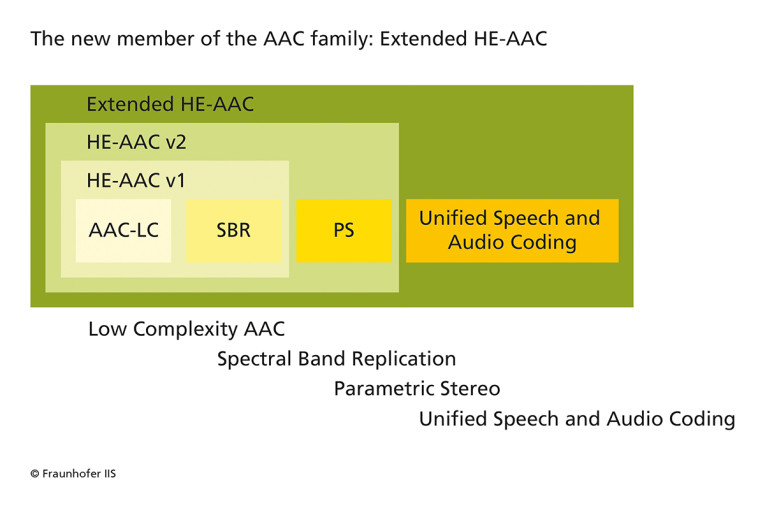
The Android operating system is the new Windows for mobile devices. Fragmented, unsecured, and lacking support for basic technologies, including audio. Nevertheless there's a big difference. While Windows remains almost unchanged for several years and it just degrades, Android is updated every year. But while this was supposed to help, the very "open" nature of Android makes it so that every single release just increases the fragmentation. Depending upon device makers that simply use Android in their efforts to clone Apple's devices and functionalities, and have no interest in promoting software updates among their users, makes it that, apart from Google's own hardware efforts and a handful of other manufacturers, there's no stable Android ecosystem to speak of. So, like with Windows, it's up to manufacturers and research institutes such as the Fraunhofer IIS, to build and contribute solutions to support the latest technologies. And unfortunately, Android is increasingly replacing the few remaining mobile operating systems that used to power simpler phones and basic smartphones used in developing countries, where multimedia streaming is just now becoming accessible.
The latest version of the MPEG AAC audio codec, xHE-AAC, will extend the usable stereo bitrate range of AAC – from as low as 12 kbit/s up to 300 kbit/s, enabling subscription video on demand (SVOD) and streaming music distributors to globally offer a better, more reliable consumer experience over congested networks and particularly in regions where consumers still rely on 2G or 3G connections. In addition, MPEG-D DRC will provide mandatory loudness control for xHE-AAC to playback content at a consistent volume and offers new dynamic range control profiles for listening in noisy situations.
“As SVOD operators enter markets with less capable mobile networks, they will need to offer videos at 50 or 100 kbit/s for successful transmission. Audio can only be a small part of that and saving 16 kbit/s or more on the audio track by switching to the xHE-AAC codec will allow for significant improvements in video quality at those rates while keeping the audio quality at the same level,” says Marc Gayer, Head of Business Department & Deputy Division Director Audio and Media Technologies at Fraunhofer Institute for Integrated Circuits IIS. “xHE-AAC’s ability to operate down to 12 kbit/s stereo will also help prevent dropouts on streaming services over congested mobile networks worldwide.”

xHE-AAC was inherently designed for adaptive streaming and is the only audio codec that seamlessly switches through the entire bitrate range from 12 to 300 kbit/s for stereo. This will allow consumers to hear transparent quality while on a good network connection but shift without any glitch or pre-processing to the bitrates a congested network will support while they are mobile.
Developers will be able to use the new features immediately in Android P, which offers extensions to the existing FDK APIs. The new technologies have been included in the existing, successful AAC patent licensing program administered by VIA Licensing at no additional cost. Professional and consumer software solutions are available from Fraunhofer today.
www.iis.fraunhofer.de/amm







